Best Self-Propelled Mowers
Top 10 Rated Self-Propelled Lawn Mowers 2024
People tend to think of mowing the lawn as backbreaking, sweat-inducing work, but self-propelled lawnmowers can make the task a lot more bearable, particularly if you have hilly or uneven terrain to maintain. All you have to do is guide the mower; it does all the rest. Some self-propelled lawnmowers practically pull you up the hill, saving you the effort of pushing. As we rated our top ten self-propelled lawnmowers, we considered the following traits:
1. Durability
2. Easy to start
3. Solid construction
4. Powerful engine
5. Bagging, mulching, and side-discharge capabilities
6. Thoughtfulness of design
7. Height adjustment options
8. Price and value
|
21-inch blade |
 A great value at $399, The Honda 21 in. 3-in-1 Variable Speed Self-Propelled Gas Mower is well worth the price for its incredible power, top-notch construction, and durability…read more
A great value at $399, The Honda 21 in. 3-in-1 Variable Speed Self-Propelled Gas Mower is well worth the price for its incredible power, top-notch construction, and durability…read more
|
Bagger |
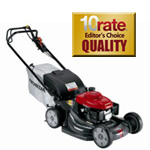 With the Honda GCV190, handling tough, steep terrain becomes a breeze. The self-propelled mower starts with a single pull, even after being stored way for the winter…read more
With the Honda GCV190, handling tough, steep terrain becomes a breeze. The self-propelled mower starts with a single pull, even after being stored way for the winter…read more
|
190cc engine |
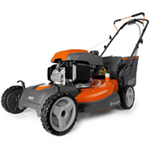 This self propelled push mower is one of the stronger ones available. Husqvarna made a very reliable machine with this one. Its a breeze to push the HU800 around the lawn thanks to the all-wheel…read more
This self propelled push mower is one of the stronger ones available. Husqvarna made a very reliable machine with this one. Its a breeze to push the HU800 around the lawn thanks to the all-wheel…read more
|
Recoil start |
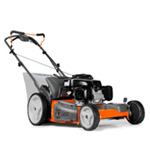 With a powerful Honda engine, the Husqvarna HU800H starts easily with a single pull and runs smoothly. Best suited to medium to large lawns, its speed controls…read more
With a powerful Honda engine, the Husqvarna HU800H starts easily with a single pull and runs smoothly. Best suited to medium to large lawns, its speed controls…read more
|
21-inch blade |
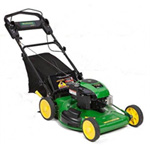 One of the nicest features of the John Deere JS36 is that when you release the control, the engine and blades stop immediately. This provides greater control to the person mowing…read more
One of the nicest features of the John Deere JS36 is that when you release the control, the engine and blades stop immediately. This provides greater control to the person mowing…read more
|
Auto-choke engine |
 Combining the Honda and Husqvarna names, the Husqvarna HU700FH has great power but runs fairly quietly. Starting on the first or second pull, it runs smoothly up and down hills…read more
Combining the Honda and Husqvarna names, the Husqvarna HU700FH has great power but runs fairly quietly. Starting on the first or second pull, it runs smoothly up and down hills…read more
|
190cc |
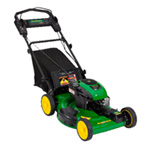 The John Deere JS28 features mow-mentum drive, which gives users greater speed control for better mowing. Its rugged steel deck can handle hilly, uneven terrains…read more
The John Deere JS28 features mow-mentum drive, which gives users greater speed control for better mowing. Its rugged steel deck can handle hilly, uneven terrains…read more
|
Bagger |
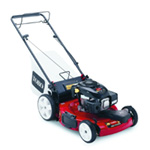 An affordable, easy-to-handle self-propelled mower, the Toro 20371 typically starts on the first or second pull of the cord. Its speed and power are impressive, although sometimes…read more
An affordable, easy-to-handle self-propelled mower, the Toro 20371 typically starts on the first or second pull of the cord. Its speed and power are impressive, although sometimes…read more
|
21 inch width |
 The Yard Machines 12A-A13K729 is an affordable, lightweight self-propelled mower that handles thick grass and inclines with ease. The mower was simple to assemble…read more
The Yard Machines 12A-A13K729 is an affordable, lightweight self-propelled mower that handles thick grass and inclines with ease. The mower was simple to assemble…read more
Why Should I Buy a Self-Propelled
Lawnmower?
If you’re like most people, you think of yard work as a tough, time-consuming chore. You may have considered what type of lawnmower to buy next, one that could make your work easier, and checked out the self-propelled lawnmowers. They tend to be more expensive. They typically require more maintenance than push mowers. So why should you buy a self-propelled lawnmower? Let’s look at some of the special qualities of a self-propelled mower.
It’s the difference between pushing and walking
Self-propelled mowers do what their name suggests: they propel themselves. You don’t have to struggle to push it where you want it to go; you simply walk behind and steer it. Some have such powerful engines that they run at a good clip, but you should be able to adjust the speed so that you’re not jogging to keep up.
They are built for hills
Because they propel themselves, self-propelled mowers are suited for lawns with hilly and uneven terrain. You won’t have to strain to push the mower up an incline. Self-propelled mowers typically have larger rear wheels for greater maneuverability.
The speed of the mower depends on the engine
Unlike a push lawnmower, which relies solely on the walking speed of the person pushing it, a self-propelled lawnmower’s speed depends on the size and power of the engine. Typically, the operator controls the speed by squeezing a throttle bar, which propels the wheels. To slow or stop the mower, the operator releases pressure on the bar. This is also a safety feature. Suppose you trip and let go of the throttle bar—the mower will automatically stop, reducing the risk of injury.
They are more expensive than push mowers
Push mowers on average cost between $150 to $400. Because of their more complicated engine parts, self-propelled mowers run anywhere from $250 to $700. So you have to factor in the size and condition of your lawn when deciding which route to take. Large, inclined yards would benefit more from a self-propelled mower, whereas smaller yards would not truly require it.
In summary
You should strongly consider a self-propelled mower if:
- You have a large yard with hilly, uneven terrain.
- You cannot or do not wish to strain to push a mower.
- You wish mowing the yard would go faster and easier.
- You have the extra time and expenses to buy and maintain the mower.
 |
Steve Holdgren is an engineer by trade and has worked for some of the largest energy related engineering firms in the world with his latest stint in Switzerland. He holds a degree is mechanical engineering… See more about Steve |
Featured Self-Propelled Mower Articles
Safety Features on a Lawn Mower
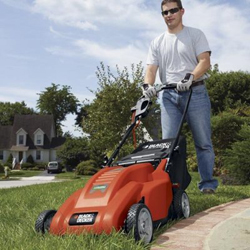
Operating a lawn mower shouldn’t be a dangerous task if you know what you’re doing and if the mower is equipped with basic safety features. Handle Lever: Some new models are designed with safety in mind and come equipped with a lever or bar on the handle that you must hold down to keep … [more]
Front vs Rear Wheel Drive Self Propelled Lawn Mower
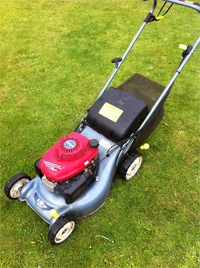
Self-propelled lawnmowers have two types of drive: front wheel and rear wheel. But what does that mean, and which one is better? Essentially, when a gearbox propels the rear wheels, it’s a rear wheel drive mower. When the gearbox propels the front wheels, it’s a front wheel drive mower…[more]
Self Propelled Mower Comparison: Husqvarna HU800AWD vs Honda GCV190
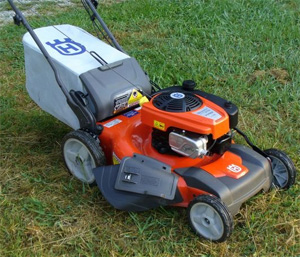
If you are in the market for a new high-powered self-propelled lawnmower, it may help to compare the features of two popular models, the Honda GCV190 and the Husqvarna HU800AWD. The two lawnmowers are in the same price range—the Honda GCV190 is $699, whereas the Husqvarna HU800AWD is $509.99…. [more]
5 Tips for Better Lawn Mower and Lawn Care
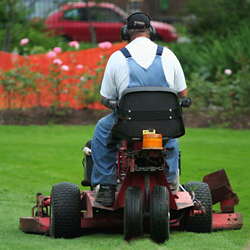
Mowing the yard can be hot, grueling work, but a well-maintained machine can make the job a bit easier. Keeping the lawn mown and tended also gives you healthier, thicker, prettier grass. 1. Blades: Mowers with sharp blades perform better all around. The average mower needs to have its … [more]
Lawn Mower Safety Tips
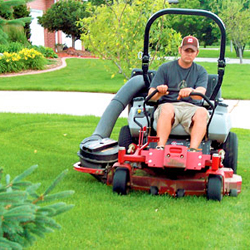
Lawn mowers of all varieties have certain inherent risks. You have to know how to operate it properly and keep it well maintained to avoid accidents. Above all, children should not operate lawn mowers and should understand that they are dangerous yard tools. General Mower Safety: Don’t let … [more]
Gas vs. Electric vs. Cordless Lawn Mowers
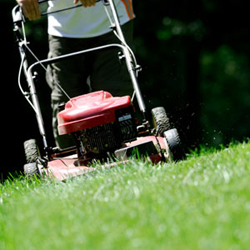
While gas mowers have been around the longest and are praised for their power, you’ll find that electric and cordless mowers are gaining popularity for being better for the environment. Of course, you never want to sacrifice cutting performance. There are advantages and disadvantages … [more]
More Top 10 Lists
Top 10 Riding Mowers

With riding lawn mowers, you want the same performance you get from a walk-behind mower but in a much larger package. Riding lawn mowers are the ideal choice if you have a lot of property to cover. Here are some of the most important factors we looked for when we selected the top 10 ride … [more]
Top 10 Push Mowers
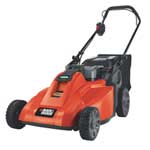
While most lawn mowers can handle flat, even terrains, the trick is to find a high-powered lawn mower that still works well when the lawn is large and hilly and containing trees, rocks, and roots. We looked at a number of lawn mowers to see how well they mulch, bag, or discharge grass … [more]
Top 10 Weed Eaters
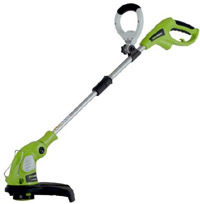
Lawn trimmers are invaluable tools for keeping your yard looking tidy and professional. Trimmers can reach tight areas that lawn mowers can’t, such as beneath bushes and around trees. Many trimmers also function as edgers… [more]
Top 10 Leaf Blowers
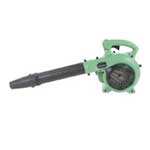
The best leaf blowers, be they gas, electric, or cordless, must be effective at blasting away leaves, twigs, and other lawn debris. We looked for a number of factors when selecting the top 10 leaf blowers… [more]
Top 10 Pressure Washers
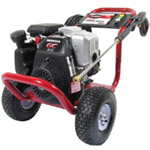
Pressure washers are an essential tool for keeping the outside of your home clean. Made for blasting through grime on cars, boats, driveways, grills, and house sidings, a pressure washer carries exponentially more power than a regular garden hose…[more]
Top 10 Shop Vacuums
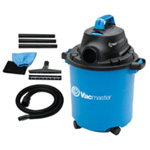
Sometimes you have big messes that a regular broom, mop, or vacuum cleaner just can’t handle. Shop Vacs, or wet/dry vacuums, are invaluable tools when it comes to cleaning up tough wet or dry spills and messes around the house…[more]
More Self Propelled Mowers
Filed Under: Lawn & Garden
